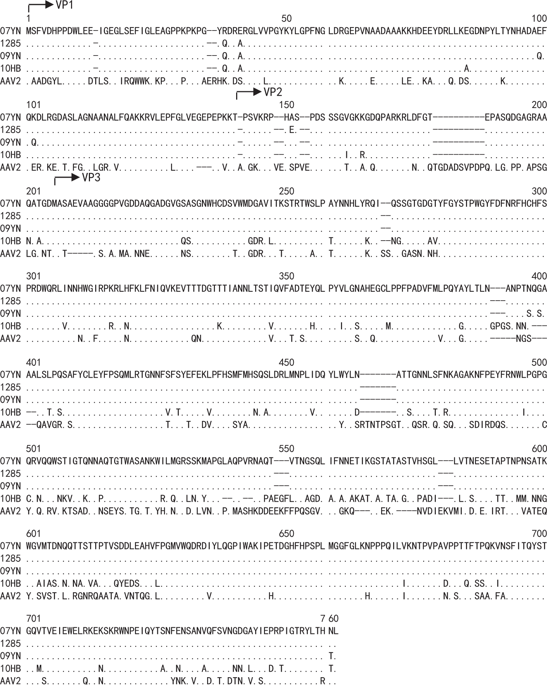当前位置:
X-MOL 学术
›
Gene Ther.
›
论文详情
Our official English website, www.x-mol.net, welcomes your
feedback! (Note: you will need to create a separate account there.)
Bat adeno-associated viruses as gene therapy vectors with the potential to evade human neutralizing antibodies.
Gene Therapy ( IF 4.6 ) Pub Date : 2019-05-20 , DOI: 10.1038/s41434-019-0081-8 Ya Li 1 , Jialu Li 2 , Yunbo Liu 1 , Zhengli Shi 2 , Haizhou Liu 2 , Yuquan Wei 1 , Lin Yang 1
Gene Therapy ( IF 4.6 ) Pub Date : 2019-05-20 , DOI: 10.1038/s41434-019-0081-8 Ya Li 1 , Jialu Li 2 , Yunbo Liu 1 , Zhengli Shi 2 , Haizhou Liu 2 , Yuquan Wei 1 , Lin Yang 1
Affiliation

|
The prevalence of adeno-associated virus (AAV) has been investigated in bat populations, but little is known about the biological properties of this virus. In this study, four full-length bat AAV capsid genes were isolated in China, with their amino acid sequences sharing 61% identity with those of AAV2 on average. These capsid genes could package AAV particles in combination with AAV2 rep and ITRs, albeit at a lower efficiency. Bat AAVs could only slightly infect mouse liver but could transduce mouse muscle to some extent after systemic administration with a higher muscle/liver ratio than that of primate AAVs. Bat AAV 10HB showed moderate muscle transduction, similar to that of AAV2, during direct intramuscular injection and, compared with other AAV serotypes, was also relatively efficient in resisting human antibody neutralization after intramuscular injection. Evolutionary analysis revealed a number of codons in bat AAV capsid genes subject to positive selection, with sites corresponding to V259 and N691 in 10HB capsids being localized on the surface of the AAV2 capsid. Mutagenesis studies indicated that the positive selection in bat AAV capsids is driven by their tropism evolution in host species. Taken together, the results of this study indicate that bat AAV 10HB vector has the possible applications for muscular gene therapy, especially in the presence of human AAV neutralizing antibodies.
更新日期:2019-11-18











































 京公网安备 11010802027423号
京公网安备 11010802027423号